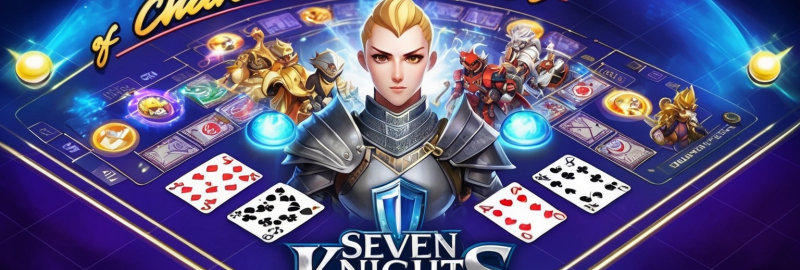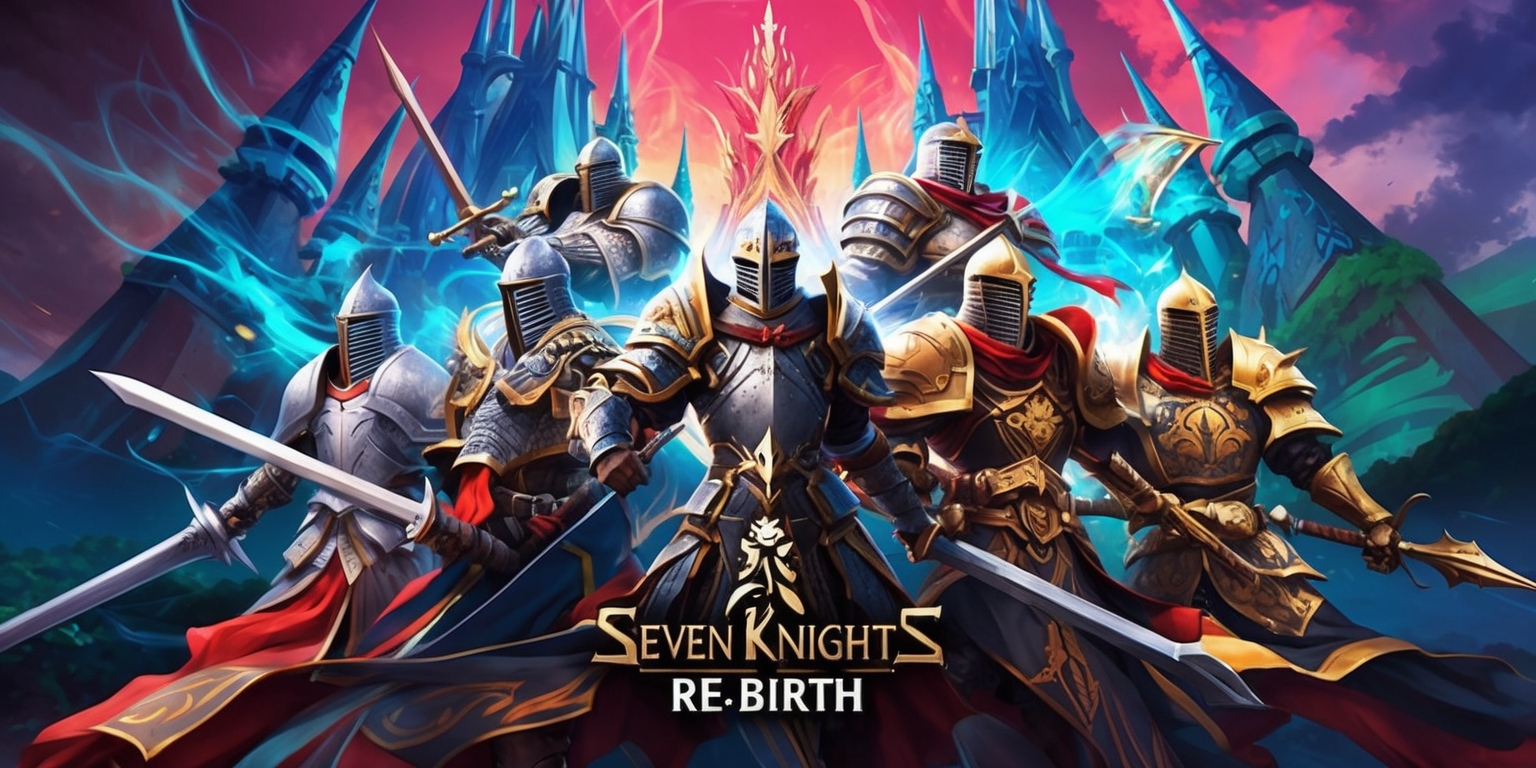
The immersive world of Seven Knights Re:Birth unfolds with a blend of chance and strategic depth that invites players to examine every hero’s potential before setting them into battle. The gameplay revolves around balancing the unpredictable outcomes of RNG summons with building a reliable, synergistic team. In this dynamic environment, every decision—whether embracing a rare recruit or investing in a legendary figure—shapes the outcome of both PvE quests and PvP duels. The game offers a nuanced experience where even the free heroes hold promise, and every obtained hero carries a story of potential supremacy. As players navigate the diverse facets of this universe, they are encouraged to assess every option with an open mind, knowing that Achievement goes beyond the mere force of luck, as it is influenced by other critical factors as well by informed, strategic choices over time.
Unpredictable Elements and Strategic Serendipity
At the heart of Seven Knights Re:Birth lies the art of balancing unpredictability with deliberate strategy. The game’s reliance on RNG in the summoning process means that each hero arrival is a small gamble, yet the quality of the free heroes ensures that players are not left wanting immediately. Instead, the interplay between chance encounters and the methodical ranking into Rare and Legendary tiers creates an engaging gameplay loop. Players must learn to adapt their recruitment strategy, recognizing that while fortune may favor them with a standout hero, the overall team composition remains vital for both PvP duels and PvE campaigns. This synthesis of planned strategy with the randomness of the game encourages a deeper level of engagement that rewards both persistence and prudent decision-making.
Analysis of Rares and Legendaries
The game distinctly separates its heroes into two key classifications: Rares and Legendaries. The Rare category, while less dazzling than its counterpart, provides essential groundwork for forming competitive squads. These heroes are more than placeholders; they possess capabilities that enable smooth progression in PvE challenges without necessitating an overreliance on premium acquisitions. On the other hand, Legendaries are celebrated for their extraordinary skill sets and potent battlefield presence, making them the ideal candidates for critical PvP confrontations. This bifurcated system allows players to weigh the benefits of immediate, reliable power versus the potential long-term rewards of securing a Legendary figure. Such distinctions foster a strategic environment in which resource allocation and upgrade decisions become both complex and rewarding.
Dynamic Approaches in PvP and PvE Battles
The dual nature of Seven Knights Re:Birth is exemplified in its distinct PvP and PvE modes, each requiring tailored strategies and hero compositions. In PvE, the game leans on a narrative-driven progression where even the standard free heroes from the summoning process can be thrust into critical roles. PvP modes, however, demand a more competitive edge where every hero’s unique skill set can tip the scales of battle. This dynamic requires players to not only master the art of building a balanced team but also to remain agile in adapting to shifting meta strategies. The tier list provided within the game’s community highlights which heroes have proven themselves on both fronts, guiding newcomers and veterans alike toward achieving excellence in the high-stakes arena of player versus player combat.
Valuable Insights on Hero Rerolls

In contrast to many contemporary gacha experiences, Seven Knights Re:Birth offers a refreshing take on hero recruitment that does not force players into continuous rerolls. The design permits a comfortable progression, where even heroes obtained from a few summons are viable starting points for further development. This aspect of the game reduces entry barriers and alleviates the pressure to immediately chase that elusive high-tier recruit. Instead, players are invited to nurture and refine the heroes they have at hand, blending both strategic leveling and tactical in-game positioning. The implicit message is clear: a smart approach to managing your roster, combined with patient resource allocation, can lead to rewarding outcomes, proving that mastery in this game is as much about foresight as it is about serendipity.
Evaluating Team Synergy Options
One of the more compelling aspects of Seven Knights Re:Birth is its emphasis on team synergy. Beyond the standalone strengths of individual heroes, the game encourages players to consider how combinations can lead to breakthrough strategies in both PvP and PvE arenas. For instance, pairing a Legendary hero with a versatile Rare might unlock abilities that temporarily elevate the overall fighting capacity of the squad. This nuanced interaction between heroes transcends simple tier rankings, pushing players to explore creative compositions and synergistic combinations. Each hero carries its own set of strengths that, when aligned with compatible partners, can dramatically alter the flow of battle. In turning focus toward these potential linkages, players are set on a journey of continuous experimentation, ensuring a gameplay experience that remains fresh and continuously challenging.
Resource Management and Upgrade Pathways
Resource management in Seven Knights Re:Birth is an integral part of the strategic landscape, driving every decision from hero selection to upgrade paths. The tier list serves as a practical tool for players to prioritize investments in heroes whose long-term benefits outweigh their immediate appeal. Instead of relying solely on luck, players develop strategies based on a clear understanding of which Rare or Legendary heroes enhance the overall combat readiness of their team. With finite resources available, discerning players must decide whether to reinforce a current squad or to risk outlays for potential game-changing acquisitions. The balancing act between immediate gratification and long-term tactical planning creates an experience rich in strategic nuance, compelling players to carefully weigh their every in-game expenditure and upgrade pathway.
Gaming Aesthetics and Heritage Design
The visual and thematic presentation in Seven Knights Re:Birth is a remarkable blend of fantasy aesthetics and deep-rooted tradition. The game crafts its world using visually arresting character designs that bring a diverse pantheon of heroes to life. Each Rare and Legendary hero is more than a functional unit; they are a work of art steeped in lore and symbolism that reinforces the immersive experience. The artistic style delineates a clear hierarchical structure, where vibrant details signal the power and prestige of Legendaries compared to the more understated qualities of Rares. This layered approach to design not only serves gameplay mechanics but also appeals to the player’s nostalgia and fascination with epic fantasy narratives. The immersive artistry propels players into a realm where strategic decisions are interwoven with a celebration of visual heritage.
Guidance for Building Competitive Teams
Constructing a competitive team in Seven Knights Re:Birth involves a delicate blend of tactical insight and judicious resource handling. The tier list provides a critical reference that can steer players away from costly mistakes while highlighting heroes who offer significant battlefield advantages. Whether players are engaged in challenging PvE scenarios or competitive PvP duels, selecting heroes that complement each other’s skill sets is crucial. Developers have structured the game in such a way that timely upgrades and optimized resource use can significantly alter the effectiveness of a team. This challenge pushes players to remain vigilant, constantly reassessing their formations in response to new hero releases and meta shifts. Thus, players are encouraged to invest not only in upgrading the best heroes but also in maintaining a well-rounded squad that can flexibly respond to evolving challenges.
The Role of Meta Adjustments
The ever-changing meta in Seven Knights Re:Birth ensures that players must continuously adapt their strategies to new circumstances. The tier list is a living document that reflects the frequent adjustments in hero performance across different gameplay modes. A hero that once dominated PvP battles might see its standing fluctuate as game dynamics evolve, pushing players to maintain a reserve of resources to react to these shifts. These meta adjustments keep the gameplay balanced and prevent stagnation within the universe. By requiring players to reassess their hero investments periodically, the game fosters an environment of perpetual strategic evolution. This necessity of adaptation keeps the battles exciting and ensures that every match is an opportunity for tactical innovation, requiring ongoing scrutiny of one’s hero roster in the face of changing competitive landscapes.
The Importance of In-Game Codes and Bonuses
In the realm of Seven Knights Re:Birth, in-game codes and bonuses play an essential role in reinforcing player engagement and providing a steady influx of valuable resources. These elements not They are not solely used as a reward mechanism but also serve an additional purpose allow players to access heroes and upgrades that may otherwise require significant time or monetary investment. Whether it is acquiring additional characters or boosting a current hero’s potential, timely redemption of these bonuses can materially shift the balance in one’s favor. The game designers have woven these incentives seamlessly into the ecosystem, ensuring that players have regular opportunities to refresh and enhance their teams. With an emphasis on maintaining team readiness, the thoughtful use of these perks can enrich the gaming experience, infusing it with a sense of ongoing progress and anticipation for what lies ahead.



Leave a comment
Your comment is awaiting moderation. We save your draft here
0 Comments